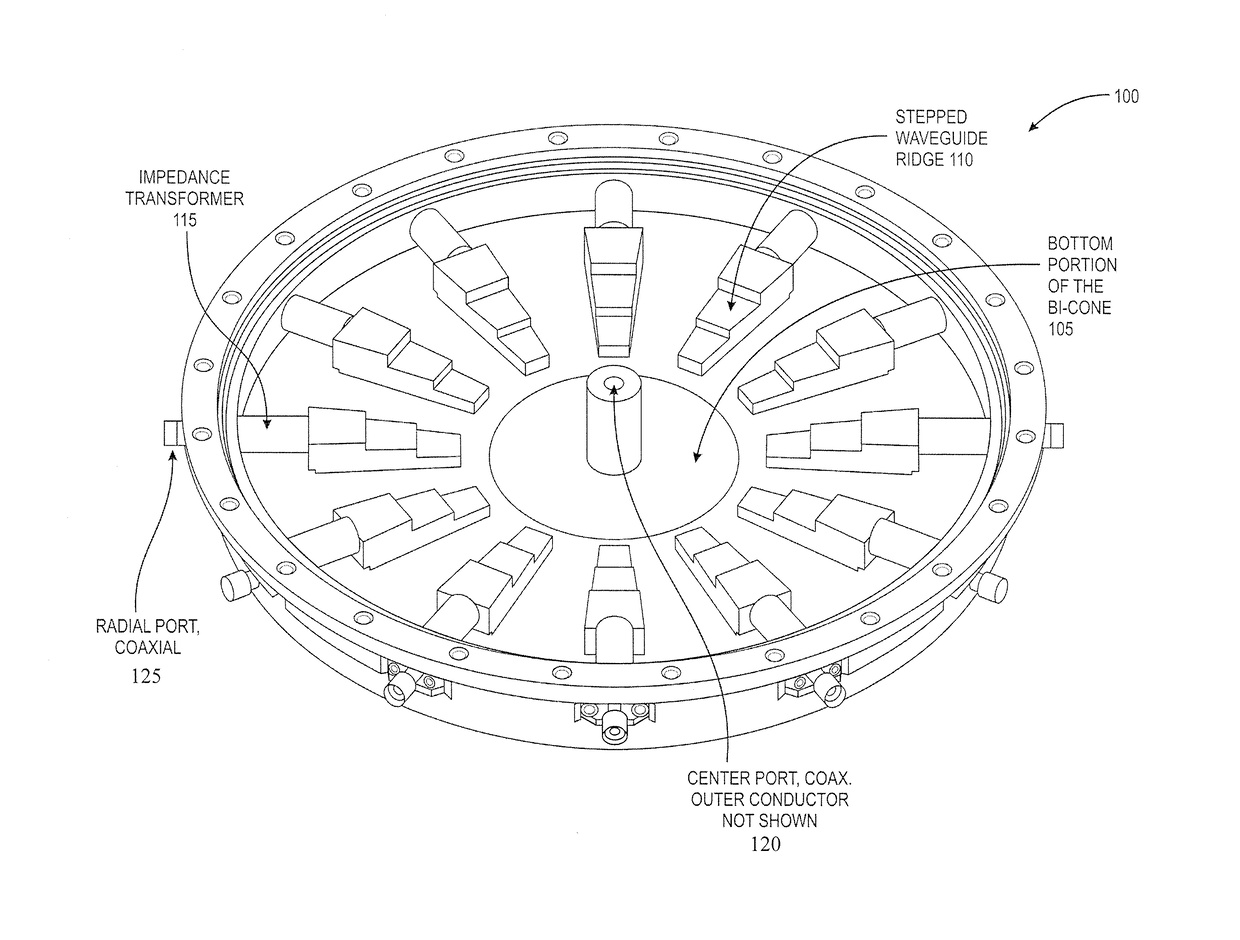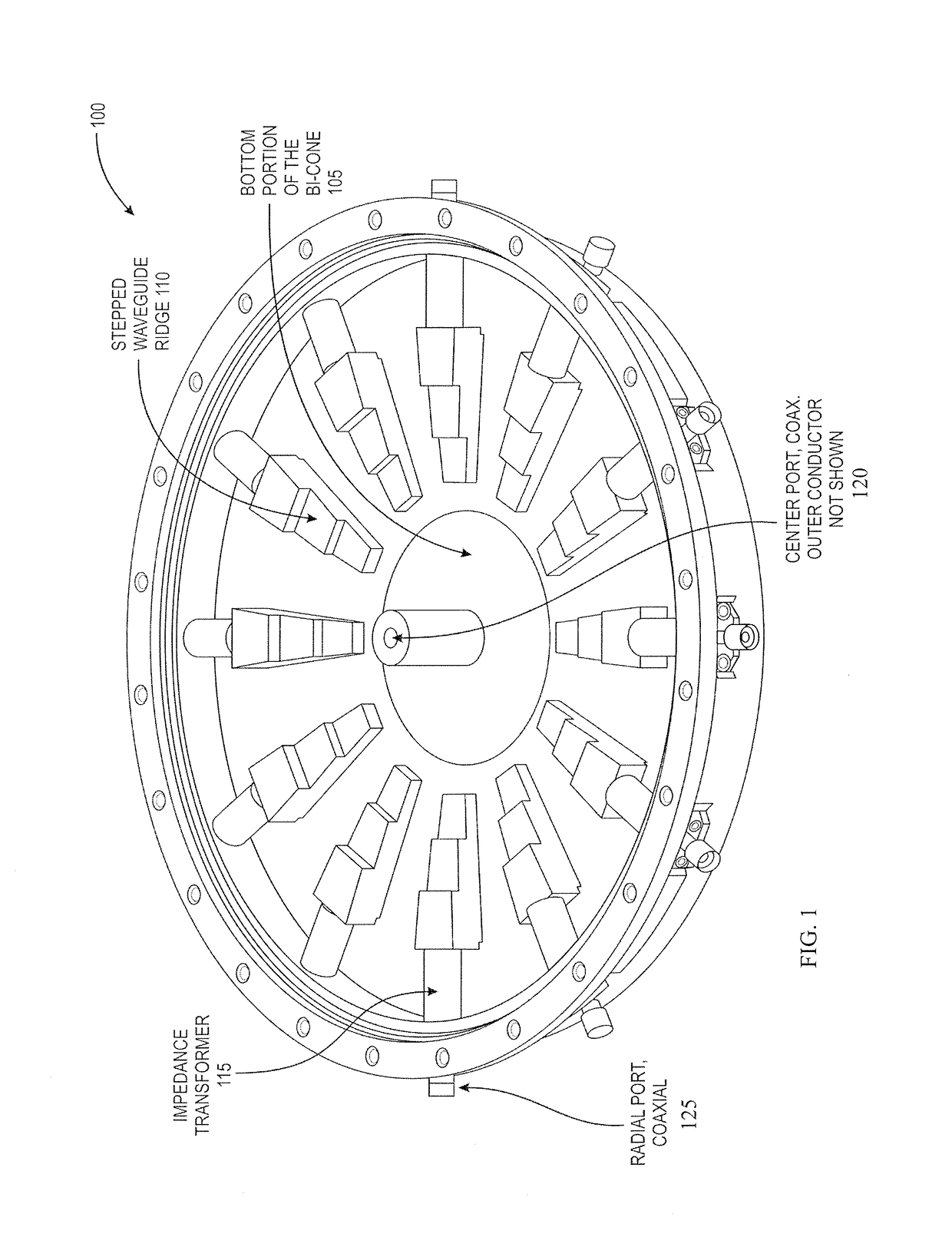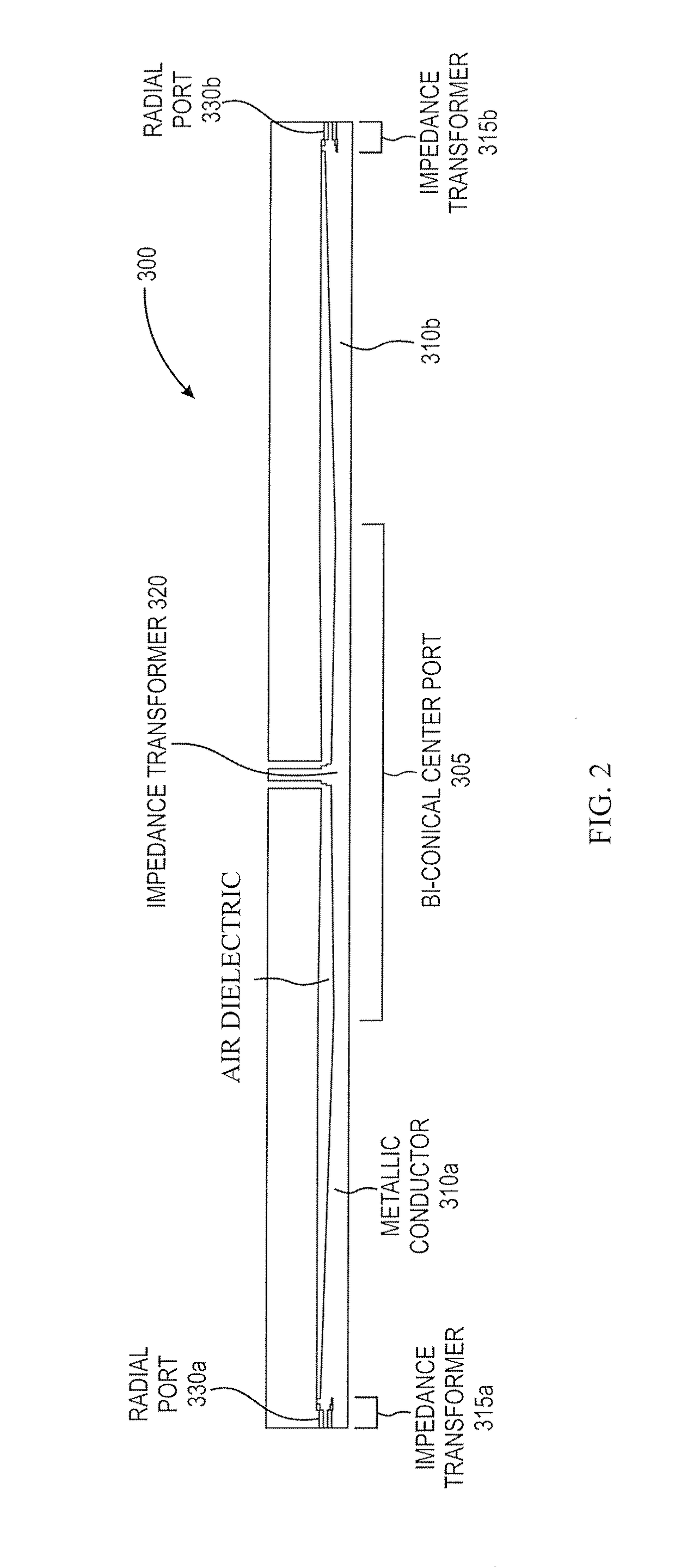N-way, ridged waveguide, radial power combiner/divider
a technology of radial power combiner and divider, which is applied in the direction of waveguide type devices, coupling devices, basic electric elements, etc., can solve the problems of limiting the power handling capability of the device versus the waveguide architecture, wilkinson power combiner/divider is highly frequency-dependent for isolation, and the insertion loss of the waveguide is low, and the effect of minimizing the effect of a failed modul
- Summary
- Abstract
- Description
- Claims
- Application Information
AI Technical Summary
Benefits of technology
Problems solved by technology
Method used
Image
Examples
example 1
-Band, NRRPCD
[0029]Referring to FIG. 1 is an example of an internal view of a solid model for a 12-Way NRRPCD 100, according to an embodiment. The figure shows the 12-Way design 100 without the cover, exposing the symmetrically-patterned radial combining / dividing structures and the bi-conical center port 105. The cross section in FIG. 1 shows a bi-conical center port 105, multiple end-launch waveguide launches 110 coupled to the bi-conical center port 105, and multiple impedance transformers 115 correspondingly coupled to the multiple end-launch waveguide launches 110. Coupled to the impedance transformers 115 are corresponding radial ports 125.
[0030]The 12-Way design 100 has a single step cylinder impedance transform and a stepped waveguide end-launch ridge. The bi-conical center port 105 may include an impedance transformer, and may be encased in a dielectric 120. The dielectric can also be used to electrically tune the structure's resonant cavity.
[0031]According to an embodiment ...
example 2
-Band, NRRPCD
[0034]Referring to FIG. 2 is a cross-sectional view of a 68-Way, X-Band, NRRPCD 300, according to an embodiment. The cross-section shows a bi-conical center port 305, left and right end-launch waveguide launches 310a,b coupled to the bi-conical center port 305, and left and right impedance transformers 315a,b correspondingly coupled to the multiple end-launch waveguide launches 310a,b. The bi-conical center port 305 may include an impedance transformer 320, and may be encased in a fluorocarbon dielectric. Coupled to the impedance transformers 315a,b are corresponding radial ports 330a,b. While the cross section of FIG. 2 shows only two waveguide end-launches 310a,b, two impedance transformers 315a,b, and two radial ports 330a,b, it should be understood that the particular 68-Way design 300 has 68 such waveguide end-launches, impedance transformers, and radial ports.
[0035]Referring to FIG. 3 is an internal view of the 68-Way NRRPCD 300 of FIG. 2, according to an embodime...
example 3
-Band, NRRPCD
[0037]Referring to FIG. 4 is an internal view of a RF simulation model of an example of a 75-Way, S-Band, NRRPCD 800, according to an embodiment. A single stepped ridge and half of the bi-conical center port are shown. FIG. 4 shows a bi-conical center port 805, an end-launch waveguide 810 coupled to the bi-conical center port 805, and an impedance transformer 815 coupled to the end-launch waveguide 810. The bi-conical center port 805 may include an impedance transformer 820, and may be encased in a dielectric 825. Coupled to the impedance transformer 815 is a radial port 830.
[0038]The example 75-Way design 800 uses a stepped ridge structure that resembles the 12-Way design 100. The impedance transform 815 on the radial port 830 uses a conical frustum that launches into the tapered stepped ridge 810. The bi-conical center port 805 is encased in a fluorocarbon dielectric 825 to increase the peak and average handling power. The fluorocarbon 825 can be used as a heat transf...
PUM
 Login to View More
Login to View More Abstract
Description
Claims
Application Information
 Login to View More
Login to View More - R&D
- Intellectual Property
- Life Sciences
- Materials
- Tech Scout
- Unparalleled Data Quality
- Higher Quality Content
- 60% Fewer Hallucinations
Browse by: Latest US Patents, China's latest patents, Technical Efficacy Thesaurus, Application Domain, Technology Topic, Popular Technical Reports.
© 2025 PatSnap. All rights reserved.Legal|Privacy policy|Modern Slavery Act Transparency Statement|Sitemap|About US| Contact US: help@patsnap.com



